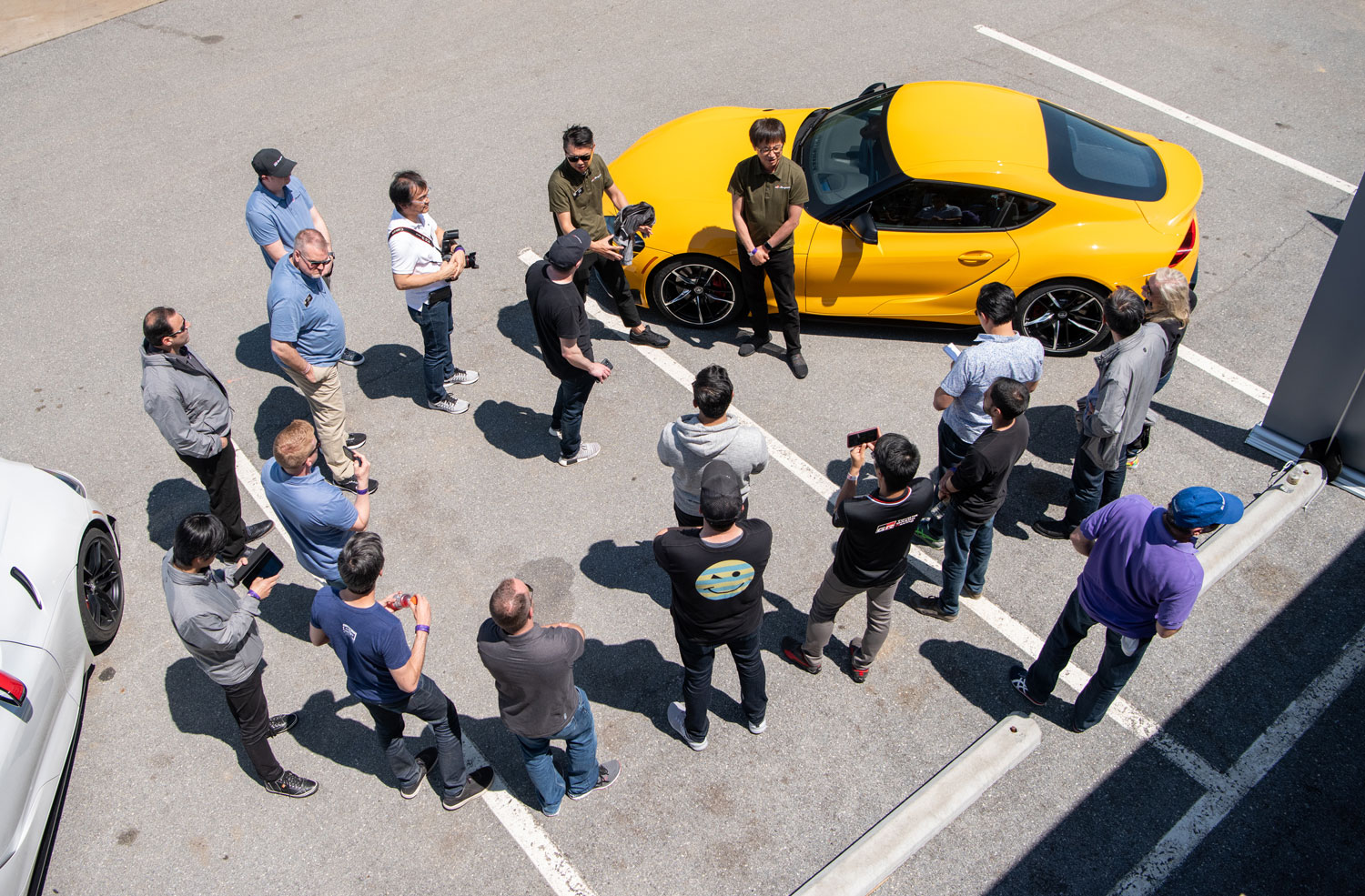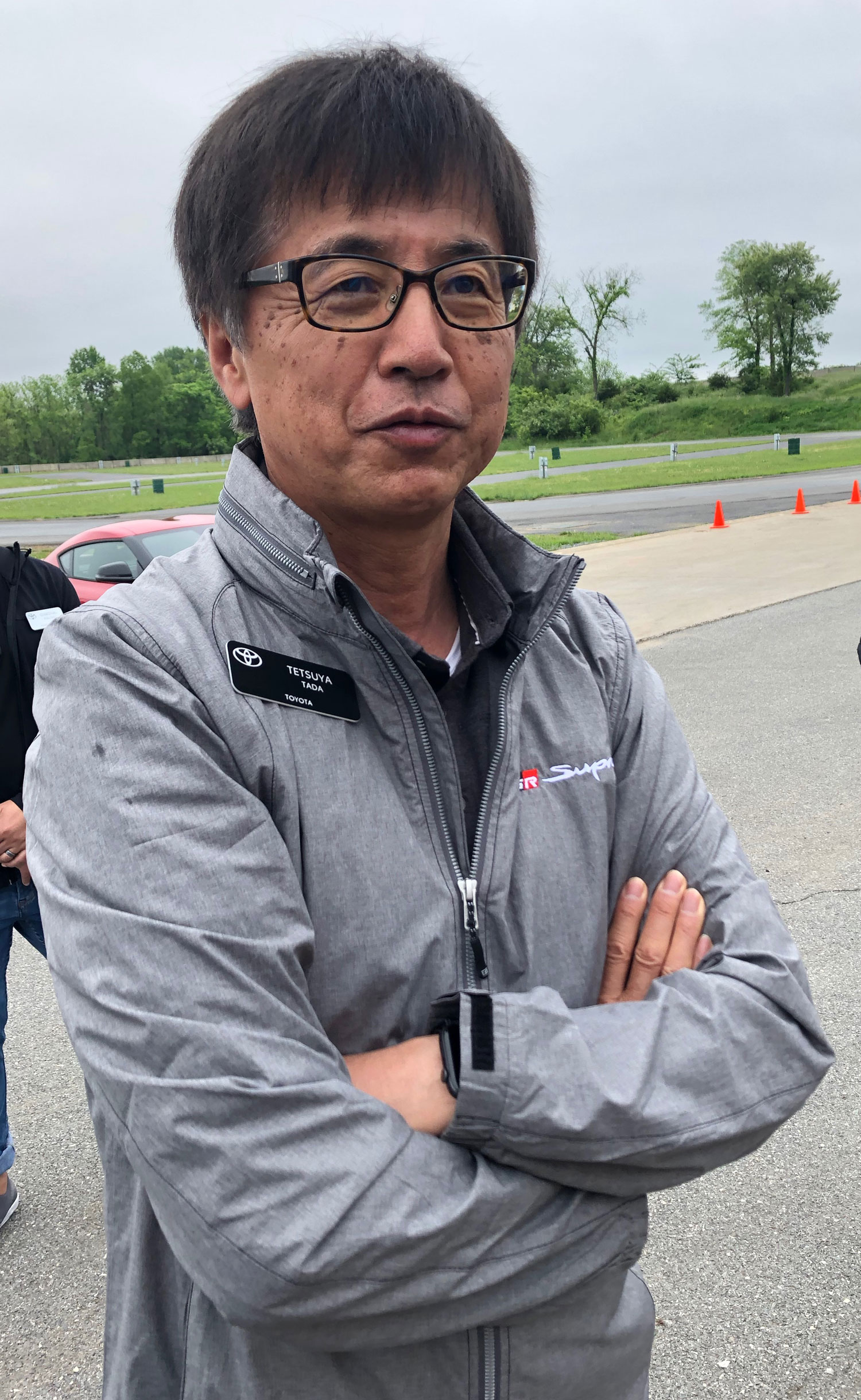Media | Articles
2020 Toyota Supra’s chief engineer tells all
Imagine being the chief engineer for the 2020 Toyota Supra, one of the world’s legendary sports cars that just returned after a 20-year hiatus, and being a little jealous of the people working on the Camry. That’s according to Tetsuya Tada, chief engineer of the Toyota Supra and 86. Truth is, designing the Supra came with a ton of challenges outside of his control.
“Everybody assumes that, building a sports car, I must have the best job in the world. But that’s the biggest misconception out there,” Tada said. “It’s a better deal to design a passenger car.”
It’s not that Tada doesn’t like sports cars. In fact, he loves them. But Tada says that external forces are making sports cars harder and harder to create. For example, the rumbling exhaust note so beloved by sports car enthusiasts is a thing of the past. Unlike the United States, which has some of the weakest pass-by noise regulations in the world, most countries now prohibit new cars from making too much—if any—noise.
“You’re going to have to decide, are you going to go with an electric motor, or if you have a gas engine, are you going to seal the compartment. It’s that extreme,” Tada said of designing new cars. “In the near future, we are going to have to completely seal the engine for sound.”
It’s not just noise, either.
Marketplace
Buy and sell classics with confidence

“There are also collision safety standards; and because of that, even a car like the Supra has 100 kilograms (240 pounds) worth of additional weight to comply with those safety standards,” said Tada. “I also have to put airbags everywhere and worry about where pedestrians might collide. I have to take all of that into account while designing.”
Even making the car feel unique is a challenge, thanks to the global consolidation of automotive suppliers, in part brought on by the Great Recession. Now, Tada says, items such as engines, suspension components, and chassis components all come from the same suppliers selling the same technology to competing automakers. This has made every vehicle feel similar, but on the other hand it’s made them far more reliable.
“Whether it’s a Mercedes-Benz—even Kias for instance—they don’t have detrimental engineering flaws anymore,” he says, noting the company tested late-model BMWs as it co-developed the new Supra with the Bavarian automaker.
Against this backdrop, Tada developed the 2020 Toyota Supra, co-developed with BMW alongside the new BMW Z4, as well as the Toyota 86, a 2+2 rear-wheel drive sports coupe co-developed with Subaru. The BRZ/86 launched for the 2013 model year.

Tada was mentored by Ichiro Suzuki, who oversaw the creation of the second-generation 1982 Celica Supra, known internally as the A40, that won Motor Trend’s “Import Car of the Year” award. Nevertheless, prior to the 86, it had been a long time Toyota developed a legimitate sports car.
“Toyota had stopped all sports car development. They had no mentors,” Tada recalls. “There was no one I could turn to for reference in the company, and I really had a hard time.”
Outside of the Civic Si, it was a similar story at Honda at that point in time. But one Japanense automaker had not given up on pure sports cars: Mazda. The Hiroshima-based manufacturer had continually refined and built the MX-5 Miata roadster during the Supra’s hiatus. So, Tada contacted Takao Kijima, the chief engineer behind the second and third generation MX-5 Miata.
Upon meeting, Kijima asked the first question: Was Tada happy now that he was in charge of a sports car?
Tada responded, “Of course,” to which Kijima replied, “if that’s the case, you’re never going to be able to make your sports car.”
Tada was surprised. Kijima continued.
“Just because it’s a sports car, you’re going to do it for the brand image, and you’re probably thinking you don’t need to make too much of a profit from it. Do you think that deep in your heart? If you’re going to do it with that sort of a mental attitude, you better stop it.”
“I was told that right off the bat,” Tada said. “But there was a rational reason behind that answer.”


“If you develop a sports car knowing it won’t make much of a profit, it’s fine as long as times are good,” Kijima told Tada. “Economies get better and they get worse. And when it dips, the cars that are unprofitable are the first ones to get dropped. And that is the biggest betrayal to your sports car users. It’s the biggest betrayal that you can make. So once you start a sports car, you must never stop building it—even if it’s on a small volume. You have to protect the sports car users who bought your car. That’s the way we have done it for 20 years.”
Kijima didn’t spare Tada from his harshest criticism.
“But Toyota, unfortunately, you made it, then you stopped making it, and that’s a real shame. You shouldn’t have made it from the beginning.”
For Tada, it was a stinging admonition, one that guided him through the development of both the 86 and the 2020 Supra.
“It’s not like if you make a good sports car it’s going to sell a lot. That’s not its existence; that’s not how it exists,” Tada said. “Every car has its role within the larger scheme of things, and some cars are made for profit. Sports cars raise brand image, create more Toyota fans. We didn’t need to make a lot of profit, but we have to be even, if not a small margin or else we can’t sustain the dips and we’ll get cancelled. And you know, automotive manufacturing is not charity; it’s for profit.”
Once Tada understood Kijima’s lesson, he realized that the Supra’s 20-year hiatus and the enormous change in automotive technology gave him a lot of leeway.

“It wasn’t an issue of whether I take something from the old Supra and I change it or add it or keep it,” Tada sais. “Everything had to be reset. And it had to be applicable to today’s norms and today’s new standards. Then we had to rethink, what is the Supra now, today? What does it mean?”
Tada also found inspiration for the new Supra from Porsche.
“From a production volume standpoint, there’s nobody who can beat Porsche,” Tada said.
This meant testing new Porsches every year during the Supra’s seven-year gestation—often the same model. “Whereas the catalogue numbers didn’t change, I was able to chart the growth and evolution of that car behind the numbers,” Tada said. “All of the stuff that a normal customer will never look at, where you would say, ‘Why would you even touch that, why would you go there?’ Porsche went and improved all of those things. That’s a lesson to be learned that I take for myself. I think they are amazing.”
Also, being that the new Supra would employ a BMW architecture and engine, Toyota benchmarked BMWs out of concern that the marque’s reliability wasn’t as good as Toyota’s.
“We were actually surprised at the high level of reliability and durability. It wasn’t like, ‘Oh, we have to fix those.’ In general, it was within Toyota standards.”
The result was the 2020 Toyota Supra, co-developed with BMW and employing the Z4 platform and drivetrain. Nevertheless, throughout the development of the new sports car, one thing remained in Tada’s mind.
“Suzuki-san has passed away. If he were alive today, I would have loved to have shown him the car. I think that he would have finally complimented me,” he said. “That’s what I think of as I go along, and that’s what I continue to think about.”





